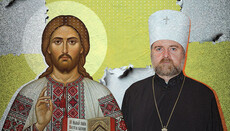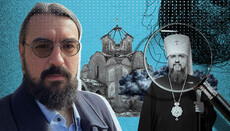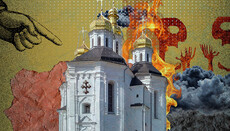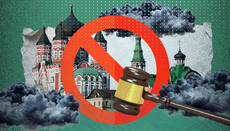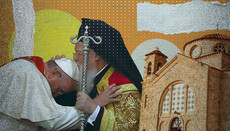On autocephaly
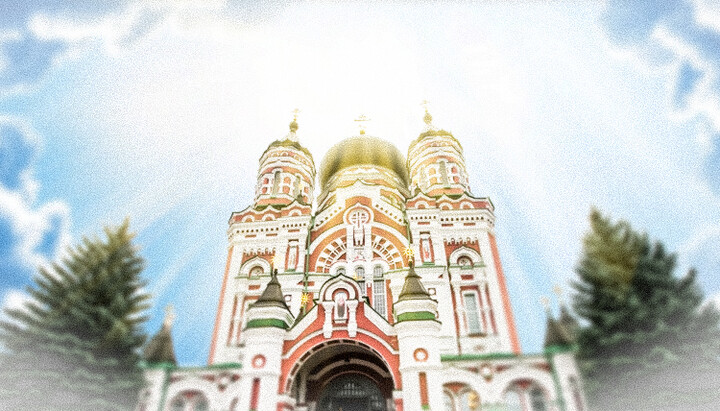
Church divisions do not arise when a Church receives the autocephalous status, but when the Mother Church refuses to grant independence to one of its parts.
The Rector of the Kyiv Theological Academy and Seminary (KDAiS), Archbishop Sylvester of Bilohorodka, in his article on the status of local Churches, emphasizes that receiving autocephaly is not a division of the Universal Church. According to him, autocephaly is a multiplication rather than a separation.
The hierarch posted the text on his Facebook page and also sent it to the UOJ editorial office. We publish Metropolitan Sylvester’s text without edits or alterations.
After the podcast on the topic “Autocephaly – Opportunity or Dead End?” I received a lot of questions about the thoughts expressed during its recording. This is very pleasing to me. The very fact that questions are being asked means that there is interest in the subjects we discussed with Father Roman Makar in Vinnytsia.
In general, I have repeatedly said that open and sincere discussion is and must remain an integral attribute of church life. That is precisely why I agreed to an open discussion on the future status of the Ukrainian Orthodox Church in the podcast.
I want to note right away that quite a few reactions to this podcast (mostly negative) were published on anonymous internet platforms and Telegram channels. Of course, when a person voices their thoughts anonymously, this can no longer be considered an open and responsible discussion. Anonymous authors who present themselves as defenders of the Church's canonical order often very easily allow not only manipulations but also direct insults. Anyone who truly wishes their Church well will not hide behind invented nicknames and anonymous platforms.
Probably, the statement that generated the most questions was my thesis that autocephaly is the normal mode of existence for a local Church, and that for each local Church, striving to attain autocephalous status is natural. People asked me: Where is this mentioned in Holy Scripture? Where do the Holy Fathers speak of this? Where is it stated in the canons of the Ecumenical Councils? Therefore, I want to elaborate on this thesis in more detail.
Of course, neither in Holy Scripture nor in the decrees of the Ecumenical Councils do we find the phrase “autocephalous Church”. However, this does not at all mean that the ancient Church lacked the concept of independent local Churches.
In fact, from the very beginning of its existence, the Church of Christ existed as a collection of local communities of the faithful, that is, local Churches.
In particular, the Book of Acts and the Epistles of the Apostle Paul repeatedly mention the churches in Jerusalem (Acts 8:1), Antioch (Acts 13:1), Galatia (Gal. 1:2), Macedonia (2 Cor. 8:1), and so on. The Revelation of John the Theologian contains the famous letters to the seven local Churches in Asia (Rev. 1–3). Of course, the local Churches of that time were not like the modern local Churches. In the New Testament, local Churches were relatively small communities of Christians in cities. They were significantly more compact than today’s local Churches. Yet each such local Church was a manifestation of the fullness of the Church in a particular place.
In the Epistles of the Apostle Paul, one can clearly see an awareness that the Church of Christ is a unity in diversity. To express this important theological insight, Paul uses the image of the body. He says that the Church is the Body of Christ. Christ Himself is the Head of this body, and all of us are its members or parts (Rom. 12:4–5; 1 Cor. 12:27; Eph. 1:22–23; Col. 1:18). This image points simultaneously to both the unity of the Church and its internal diversity. The body consists of parts, yet all these parts exist in organic unity and cannot exist independently of one another. It is the same principle with the Church. All local Churches confess the same faith, celebrate the same Eucharist, yet are autonomous in managing their internal affairs.
And here is what is interesting: opponents of autocephaly usually cite passages from the Apostle Paul in which he speaks of the unity of the Body of Christ, yet curiously bypass his reflections on diversity. In the Church, neither can be rejected: unity is the guarantee of diversity, and diversity in turn strengthens unity in the faith. Saint Cyprian of Carthage († 258) wrote: “Since therefore the bond of agreement holds, and the sacrament of the Church is preserved undivided, every bishop is at liberty to act in his own diocese, yet he must give an account of his actions to the Lord” (Epistle to Antonianus about Cornelius and Novatian). Consequently, each bishop must govern his own diocese independently, while at the same time there must exist constant communion among the bishops of the Universal Church, which is manifested, for example, in the regular convocation of church Councils.
As we can see,
the independent existence of local Churches is a certain reality already recorded in the New Testament (although the term “autocephaly” does not appear there).
Likewise, in the canons of the Ecumenical Councils, although we do not encounter the term “autocephaly”, we clearly see the concept that local Churches are administratively independent units. In the canons of the First Ecumenical Council, we observe the establishment of the system of metropolitanates, which took shape no later than the 3rd century. While in the apostolic era, it was about independent local Churches, by the turn of the 3rd–4th centuries, fully independent metropolitanates already emerged. Later, when the phrase “autocephalous Church” became commonly used, Byzantine canonists explained that all ancient metropolitanates were, in fact, autocephalous. For example, the well-known canonist Patriarch Theodore Balsamon (12th century) wrote: “In ancient times, the metropolitans of all dioceses were autocephalous and received ordinations from their own synods.”
How many autocephalous Churches existed in the 4th century? It is difficult to give a definitive answer to this question. For example, Professor Sergius Troitsky believed that at least within each diocese there existed an autocephalous metropolitanate. By the end of the 4th century, there were fifteen such dioceses.
But in the 5th–6th centuries, the system of metropolitanates was replaced by the system of patriarchates. As a result, autocephalous metropolitanates were gradually subordinated to the five patriarchal sees. However, fully independent Churches could still exist outside the patriarchal system. In particular, this was the case with the Church of Cyprus, and after the era of the Ecumenical Councils, autocephalous Churches also emerged outside the five patriarchates in Bulgaria, Georgia, and Serbia.
All this leads me to an obvious conclusion: autocephaly (that is, administrative independence) is the natural condition of a local Church.
We rarely stop to consider that Saints Ignatius the God-bearer, Polycarp of Smyrna, Irenaeus of Lyons, Cyprian of Carthage, Basil the Great, John Chrysostom, Gregory the Theologian, Ambrose of Milan, and many other hierarchs should, in modern terms, be regarded as the heads of autocephalous local Churches. Although the understanding of independent local Churches may have differed in the lifetimes of each of these saints, the very existence of such Churches was self-evident to all of them.
What both surprises and upsets me is the fact that for many members of our Church – laypeople, priests, and even bishops – the term “autocephaly” is synonymous with division within the Church, and even more so, with schism. I would like to remind everyone that in the ancient Church, the concept of schism was understood differently. St. Augustine rightly observed: “There can be no schism unless heresy exists beforehand” (St. Augustine, Letter 101).
In other words, the schisms of ancient times were not equivalent to “autocephalous schisms” but rather represented heretical ecclesiology, whose adherents sought to separate themselves from the Catholic Church rather than be recognized by it (see the teachings of Montanus, Novatian, Donatus, etc.).
People who oppose autocephaly usually speak of it as a separation from Church unity, caused by non-ecclesial factors. This is exactly what I meant in the podcast when I said that the rejection of the idea of autocephaly results from a distorted ecclesiology.
Let me emphasize once again: the autocephalous status of a particular local Church is natural.
Church history shows that divisions do not arise when a Church attains autocephalous status; on the contrary, they occur when the Mother Church, under various artificially invented pretexts, refuses to grant independence to one of its parts.
Unfortunately, throughout history, all the great Churches have tried to retain within their fold those ecclesiastical regions that were objectively ready for independent existence. One could even say this is a typical “disease” of patriarchates. Instead of multiplying the family of local Churches while preserving unity, large patriarchates try to hold on to their “grown-up daughters” for as long as possible, and it is precisely this that leads to painful conflicts and serious ecclesiastical divisions.
The creation of a new autocephalous Church is not a division of the Universal Church. Autocephaly is not division; it is multiplication – just as the Churches multiplied during the apostolic preaching. It is the right process, reflecting a high level of Christianization among the people. Therefore, the aspiration for autocephaly is not an evil or a sin against the Church.
I would like to draw attention to another issue that constantly arises in discussions of autocephaly. Opponents of the autocephalous organization of the Ukrainian Church usually claim that national consciousness plays a negative role in the process of creating autocephalous Churches. However, such a rejection of the national component in Church life contradicts ecclesiastical tradition.
On this point, I quote from an article by Metropolitan Antony of Boryspil, published in the journal “Works of KDA” in 2008. In particular, Metropolitan Antony, reflecting on the role of the national-cultural component in the process of creating autocephalous Churches, rightly wrote: “In this regard, it is worth recalling Saints Cyril and Methodius (9th century), Greek missionaries among the Slavs, who laid the foundation of ‘Slavic Christianity’, encouraged the use of the Slavic language, and contributed to the creation of an alphabet. It is inherent in the nature of Orthodoxy to develop the Church based on existing local cultures. From this perspective, the development of autocephaly based on the ‘cultural factor’ does not present any theological or canonical problems for Orthodoxy.”
Metropolitan Antony further adds: “An autocephalous Church preserves its national character while remaining in communion with other autocephalous Churches. That is, it maintains both diversity and unity” (Antony [Pakanich], Local Churches and Church Unity. A Few Words on the Nature of Church Autocephaly, Works of KDA, No. 8, Kyiv, 2008, pp. 29, 31.).
Indeed, it seems strange to claim that the national-cultural component of our life should not influence Church affairs if, at the same time, we venerate Saints Cyril and Methodius, who specifically defended the right of the Slavs to both their own culture and their own Church. In this respect, discussions about the role of the national factor in the Church are a direct continuation of the polemics the holy brothers engaged in with Latin clerics as early as the 9th century.
Extremes of the national factor in Church life were rightly condemned as phyletism (or ethnophyletism). However, this does not mean that the Church should ignore the national consciousness of its flock. On the contrary, it is in the development of various national cultures that the unity of local Churches in diversity should be revealed.
